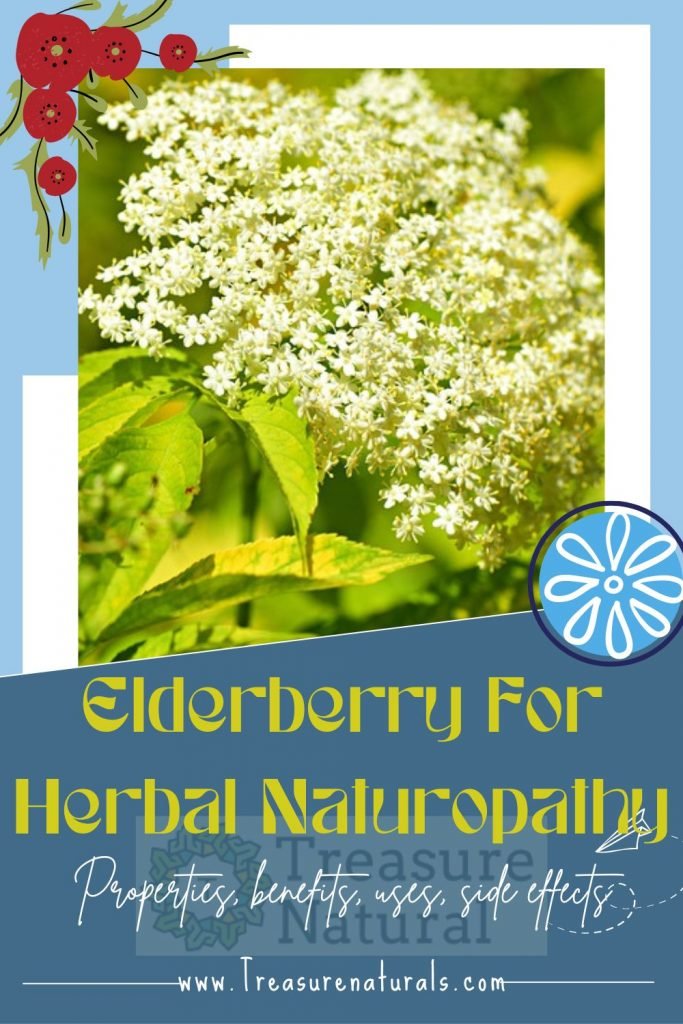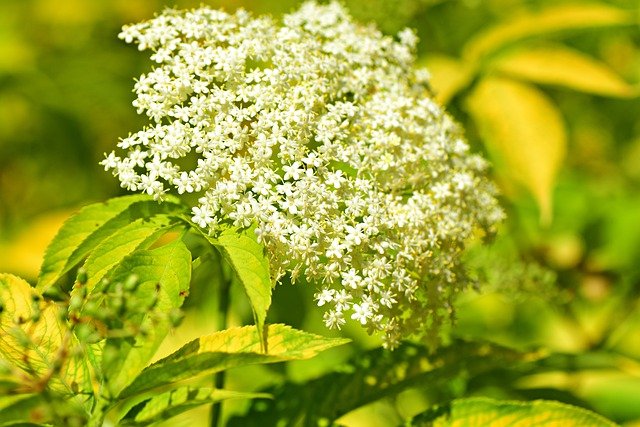
Active ingredients and properties of elderberry that promotes sweating, is emollient and expectorant and is used in various disorders including fever and cold.
Sambuco is a plant used in phytotherapy for its diaphoretic, diuretic and laxative properties in the treatment of cooling disorders, cystitis and other ailments.
Facts of Elderberry
Elderberry is used:
- Clubs;
- leaves,
- fruit;
- bark
characterized by different constituents and properties.
Elder flowers are considered diaphoretic (promote sweating), diuretics, emollients and expectorants and are therefore used to promote sweating in case of fever, as well as to treat inflammation of the respiratory system.
With the flowers, combined with sugar and lemon, the elderberry syrup is then prepared.
The leaves, emollient and depurative, find indications similar to flowers.
The fruits are instead laxatives, immunostimulants and antineuralgic and are used mainly in the form of juice against neuralgia to relieve pain. With the fruits is also prepared a jam or elderberry jam with a diaphoretic action at dosages up to 8 grams, laxative and purgative at higher doses.
Finally, the inner cortex, with diuretic properties, is used to treat cystitis.
How to use elderberry
Infusion
It is prepared with 4 grams of flowers in 150 milliliters of boiling water, to be left to infuse for ten minutes. You consume several cups a day for a week.
Decoction
It is prepared with 30 grams of bark in a liter of water to be left on the fire until the liquid is reduced by half. They consist of one or two cups a day.
Mother tincture
30 drops diluted in a glass of water are administered, three times a day.
Elderberry syrup
It is prepared by placing the cleaned elderflowers in a jar, alternating them with slices of lemon and covering everything with water. It is left to macerate for 48 hours with the jar closed, after which it is filtered and boiled for fifteen minutes over low heat with about half of sugar. Finally, it is left to cool and bottle.
Contraindications and side effects of elderberry
Elderberry is an almost safe drug, if used at the recommended doses. Its consumption is contraindicated in allergic people and should be avoided in case of therapies with diuretic drugs.
The intake of flowers is not recommended during pregnancy and lactation and in children under the age of twelve. In any case, the use of flowers should not exceed a week, and the application of fresh flowers to the skin causes strong skin irritation.
Leaves and seeds should not be consumed, while the consumption of immature fruits can lead to intoxication resulting in diarrhea, vomiting, burning in the throat and difficulty breathing.
Characteristics and active ingredients of elderberry
Elderberry (Sambucus nigra) is a small plant of the Caprifoliaceae family. It is a tree or shrub that generally does not exceed five meters in height, characterized by a grayish bark on which there are numerous protruding and large lenticels.
The leaves are opposite, pinnate composed and consist of 5-7 oval leaflets. The flowers are small and fragrant, white in color and gathered in corymbiform tops.
The fruit is a rounded and black drupe. The balsamic period for harvesting the drug is between the months of May and June.
To obtain the drug, dried fruits and inflorescences are used: the flowers dry quickly exposed to air, assuming a characteristic yellowish color and a pleasant aromatic smell.
Sambucus ebulus is a similar but smaller species, often used to sophisticate the flowers of Sambucus nigra.
Among the active ingredients of the phytocomplex we find essentially:
- Sambucina;
- sambunigrina;
- rutin;
- isoquercitin;
- astragaline;
- campferolo;
- essential oil
- free fatty acids;
- tannin (in the bark);
- emulsin;
- invertine;
- benaldehyde (in the leaves);
- choline;
- mucilage;
- sick;
- valerianic acid;
- tartaric acid (in flowers);
- anthocyanins;
- wax;
- rubber;
- acetate;
- tartaric acid;
- citric acid (in fruits).
The habitat of elderberry
In a geographical distribution of the species, the Elderberry is widely represented in Italy and in most of Europe, preferring, as an optimal habitat, mountain environments, ruderal places, humid and sparse woods.
Curiosities about elderberry

From a distillate of elderflower, together with anise, fennel, mint, licorice and other aromas, a tasty digestive liqueur is obtained, known by the trade name of Sambuca.






